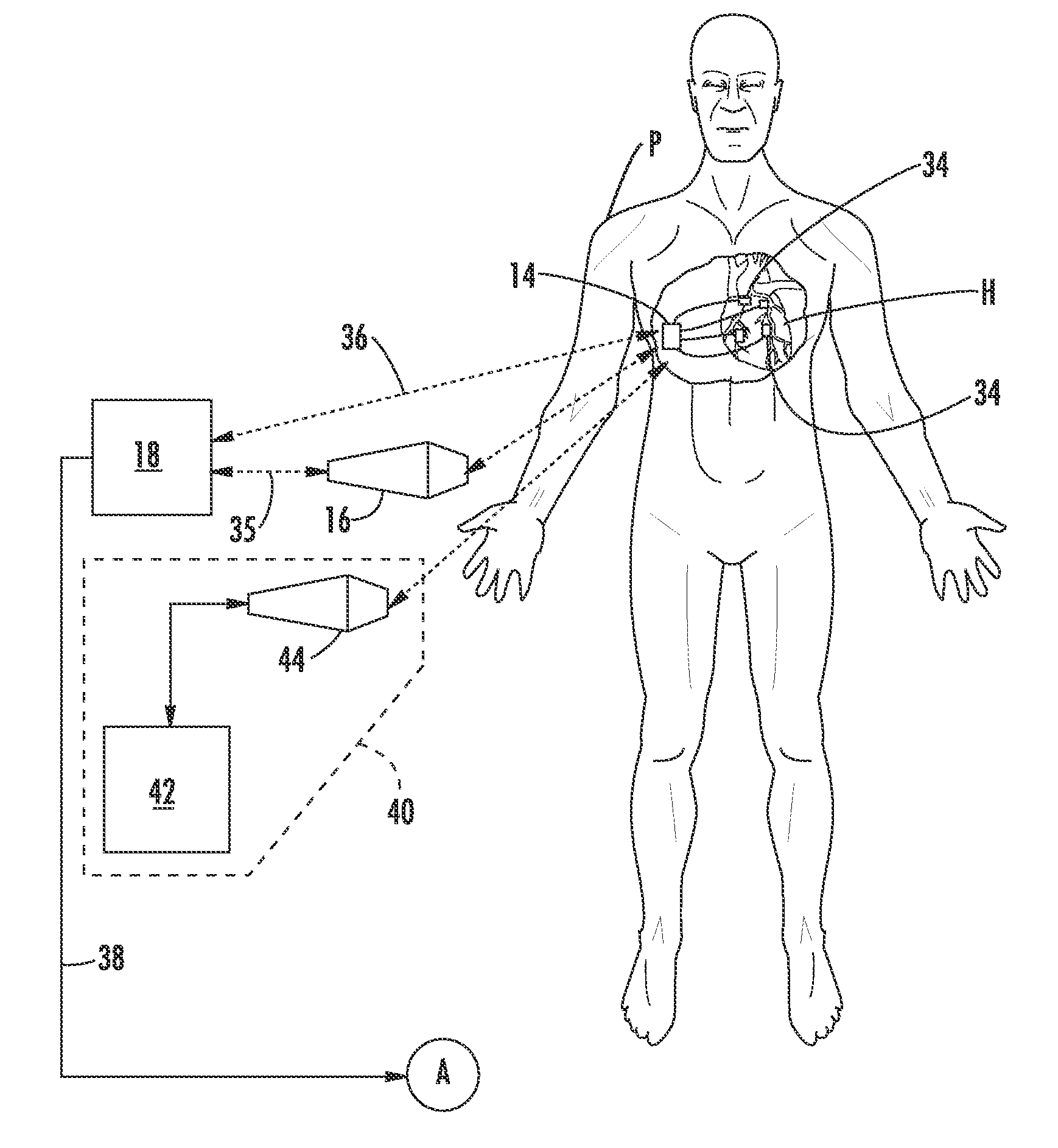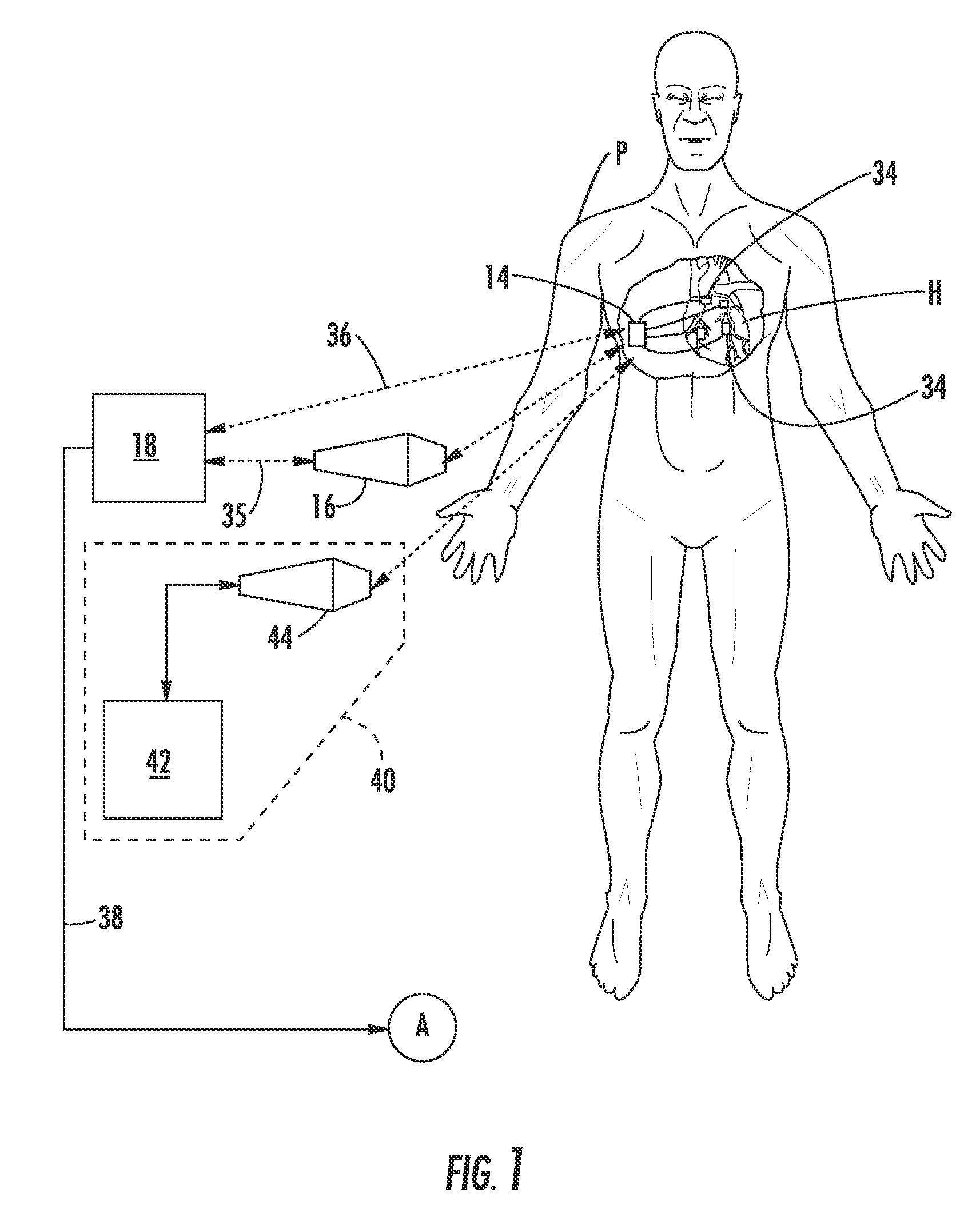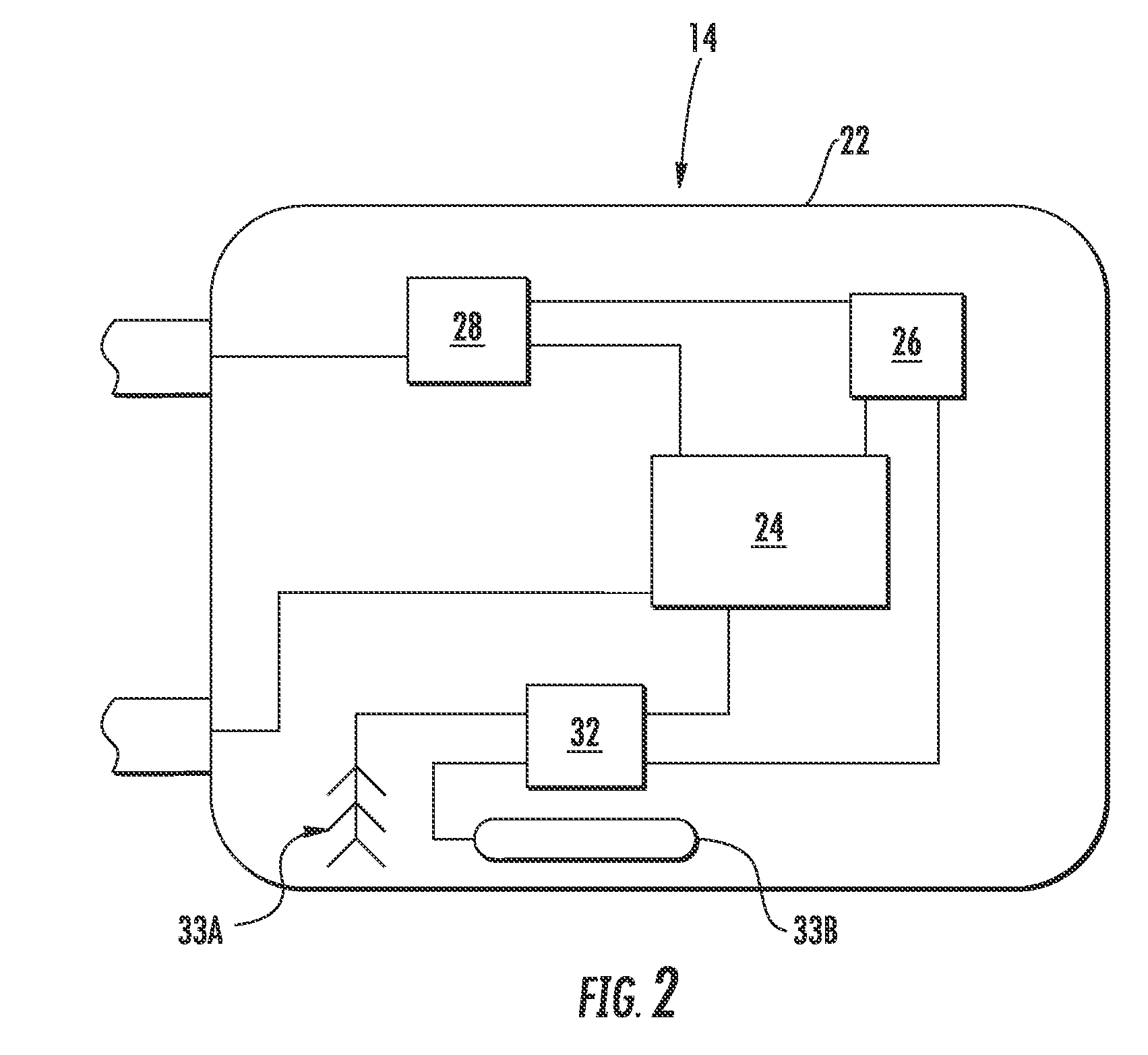System and method for heart monitoring
a heart and monitoring system technology, applied in the field of non-invasive equipment, can solve the problems of cardiac perforation, cardiac perforation, cardiac perforation, and other morbidities including death, and the patient's repeated visits to hospital or other medical facilities can be expensive, and the catheterization procedure is not only expensive, but painful and inconvenient for the patien
- Summary
- Abstract
- Description
- Claims
- Application Information
AI Technical Summary
Benefits of technology
Problems solved by technology
Method used
Image
Examples
Embodiment Construction
[0038] Referring to the drawings wherein identical reference numerals denote the same elements throughout the various views, FIGS. 1-3 illustrate a system for monitoring the heart “H” of a heart transplant patient or a patient suffering congestive heart failure or other cardiac ailment. The system includes an implantable registering unit 14 for non-invasive monitoring of a patient's heart H, an optional relay unit 16 for interrogating the registering unit, a local data unit 18, and a data server 20.
[0039] The registering unit 14 is structured to be implanted into the patient's body “P” and, thus, preferably includes a housing 22 constructed of a relatively rigid material that is biologically inert, such as titanium or silicone. Any commercially available pacemaker with appropriate software modifications may be used as the registering unit 14. As illustrated in FIG. 2, the registering unit 14 includes a controller 24, such as a microprocessor operating under software control or a pr...
PUM
 Login to View More
Login to View More Abstract
Description
Claims
Application Information
 Login to View More
Login to View More - R&D
- Intellectual Property
- Life Sciences
- Materials
- Tech Scout
- Unparalleled Data Quality
- Higher Quality Content
- 60% Fewer Hallucinations
Browse by: Latest US Patents, China's latest patents, Technical Efficacy Thesaurus, Application Domain, Technology Topic, Popular Technical Reports.
© 2025 PatSnap. All rights reserved.Legal|Privacy policy|Modern Slavery Act Transparency Statement|Sitemap|About US| Contact US: help@patsnap.com



